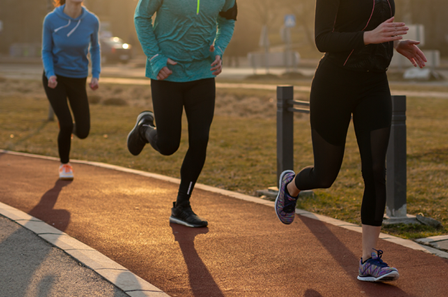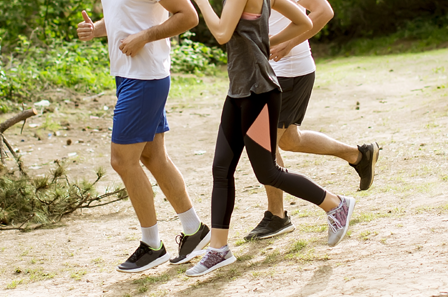The starting line isn’t where your run begins. It starts with a deliberate, dynamic warm-up that primes your body for the miles ahead. Forget the static stretches of yesteryear; today’s runners know that dynamic movement is the key to unlocking peak performance and minimizing injury risk. This piece offers an all-encompassing tutorial on creating a personalized and effective warm-up routine to prepare for your run.
Why Dynamic? The Science Behind the Movement
Dynamic warm-ups differ significantly from static stretching. Performing static stretches, which involve maintaining a pose for a long duration, before running can reduce muscle power and hinder performance. Dynamic movements, on the other hand, mimic the motions you’ll be performing during your run, gradually increasing:
Muscle Temperature: Warmer muscles are more pliable and efficient.
Blood Flow: Enhanced circulation supplies oxygen and nutrients to active muscles.
Joint Lubrication: Dynamic movements stimulate synovial fluid production, reducing joint friction.
Neuromuscular Activation: They activate the neural pathways responsible for muscle coordination and control.
Range of Motion: They improve flexibility and mobility, allowing for a more efficient stride.
Crafting Your Dynamic Warm-Up: A Step-by-Step Guide
- Light Cardio Activation (3-5 Minutes):
This phase gradually elevates your heart rate and prepares your cardiovascular system.
Brisk Walking: Start by walking for a few minutes, focusing on good posture and a steady pace.
Light Jogging: Transition to a light jog, slowly increasing your speed. This should be an effortless, conversational pace.
Walking Lunges: Incorporate a few walking lunges into your light jog to activate the large muscle groups in your legs.
- Dynamic Movement Sequence (10-15 Minutes):
This is the core of your warm-up, focusing on movements that mimic running and improve mobility. Arm Circles (Forward and Backward): Stand with feet shoulder-width apart, arms extended. Perform small, controlled circles forward, gradually increasing the size. Repeat in the backward direction.
Purpose: Warms up shoulder joints and improves upper body mobility.
Leg Swings (Forward and Sideways): Stand on one leg, holding onto a stable object if needed. Swing the other leg forward and backward, focusing on a smooth, controlled motion. Repeat sideways, swinging the leg across your body.
Purpose: Improves hip flexor, hamstring flexibility, and hip mobility.
Walking High Knees: With each step, lift your knees high towards your chest. Concentrate on activating your core muscles and keeping proper posture.
Purpose: Activates hip flexors, improves coordination, and warms up quads.
Butt Kicks: Jog forward, kicking your heels back towards your glutes with each step. Focus on a quick, light movement.
Purpose: Warms up hamstrings and improves leg turnover.
Hip Openers/Closers: Stand with feet shoulder-width apart. Lift one knee, rotate it outward, and bring it across your body. Repeat on the other side.
Purpose: Improves hip mobility and flexibility.
Torso Twists: Position your feet so they are as wide as your shoulders and stretch your arms out to the sides. Twist your upper body from left to right while ensuring your hips remain forward-facing.
Purpose: Warms up core and spine and improves rotational mobility.
Lateral Shuffles: Shuffle side to side, keeping your feet low.
Purpose: Warms up the leg’s lateral muscles, increasing lateral stability.
Ankle Rotations: Rotate each ankle clockwise and counterclockwise.
Purpose: Improves ankle mobility and stability, which is crucial for preventing ankle injuries.
- Gradual Pace Progression (2-3 Minutes):
This phase prepares your body for the intensity of your run—transition from dynamic movements to an easy jog. Gradually increase your pace until you reach your intended running speed.
Tailoring Your Warm-Up:
Distance and Intensity: Adjust the duration and intensity of your warm-up based on the length and intensity of your run. Longer or more arduous runs require a more thorough warm-up.
Personal Needs: Consider your needs and any areas of tightness or weakness. Incorporate movements that target those areas.
Listen to Your Body: Pay attention to your body’s signals. If you feel any pain, stop the movement and adjust accordingly.
Weather: In colder weather, extend your warm-up to ensure your muscles are adequately warmed.
Important Considerations:
Hydration: Always ensure you’re adequately hydrated before you begin your warm-up.
Consistency: Make dynamic warm-ups a consistent part of your running routine for optimal benefits.
Focus on Form: Prioritize proper form over speed or range of motion.
By incorporating a well-structured dynamic warm-up into your pre-run routine, you’ll set the stage for a more efficient, enjoyable, and injury-free running experience.





